|
|
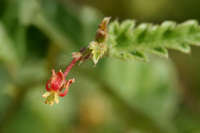 Fiower Patrick Alexander @http://swbiodiversity.org, Usage Rights: Creative Commons Attribution-ShareAlike (CC BY-SA) | 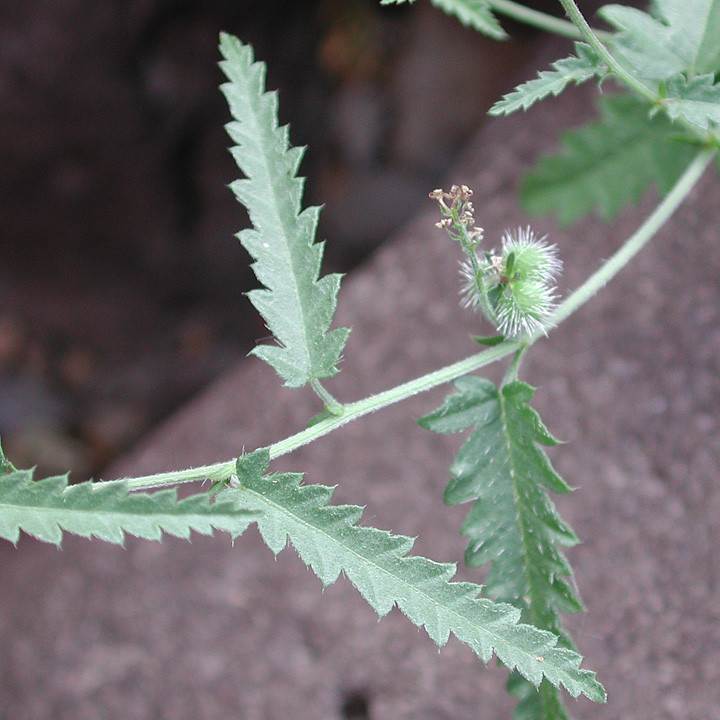 Leaves and fruit Max Licher @http://swbiodiversity.org, Usage Rights: Creative Commons Attribution-ShareAlike (CC BY-SA) | 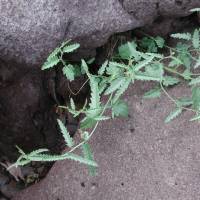 Plant Max Licher @http://swbiodiversity.org, Usage Rights: Creative Commons Attribution-ShareAlike (CC BY-SA) | 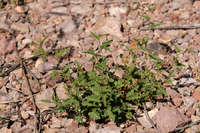 Plant Patrick Alexander @http://swbiodiversity.org, Usage Rights: Creative Commons Attribution-ShareAlike (CC BY-SA) | 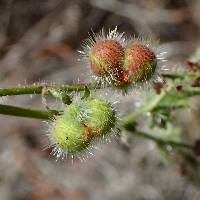 Fruit Sue Carnahan @http://swbiodiversity.org, Usage Rights: CC BY-NC (Attribution-Non-Commercial) | |
|
Origin:
Native
Life Cycle:
Perennial Similar Species: Tragia ramosa
General Desc:
Erect or trailing plant with slender stems and a twining growth habit. Leaves are narrow, covered with short, stinging hairs and have jagged margins. Tiny red to reddish-green flowers with yellow stamens grow in clusters at the top of the flower stalk.
Identification notes: Stems dark green or whitish, reddish or grayish; leaves simple, can be lobed basally, margins coarsely toothed to serrate; flower clusters terminal; glands sessile or absent; male flowers 8 to 40 per stalk, sepals reddish green, stamens 3 to 6, up to 10.
Height:
To nearly 1 foot
Habitat Description: Found in canyons, desert washes (areas with spiny shrubs and intermittent streams), open rocky slopes, hillsides, valley floors and pine-oak woodlands.
Plant Communities:
Desert Scrub, Interior Chaparral, Semidesert Grasslands, Pinyon Juniper Woodland, Montane Conifer Forest
Elevation: 2500 - 7400 feet
Color:
Red to reddish-green
Shape:
Regular in elongated clusters
Tubular:
N
Flowering Period:
Mar - Nov
Description:
Male and female flowers grow on the same plant at the top of the flower stalk. 8 to 40 male flowers each with 3 or 4 leaf-like sepals and 0 petals grow above 1 to 2 female flowers with 6 sepals and 0 petals. Reddish-green sepals are bent backwards.
Leaf Color:
Dark green
Leaf Type:
Simple
Leaf Shape:
Narrow
Leaf Margin:
Toothed
Leaf Attachment:
Alternate
Leaves Clasp:
N
Hairs:
Leaves and stems
Spines:
N
Leaf Description:
Leaves are often lance-shaped, at times triangular, are about 1/2 to 1-1/2 inches long and have rough, bristly hairs. Stems are dark green or whitish, reddish or grayish, have curvy tops and are covered with coarse hairs that sting the skin if touched.
Fruit Color: Reddish-green to green
Fruit Type: Capsule
Fruit Notes: The fruit is dry, has 3 lobes (segments) each containing 1 seed, is about 1/4 to 1/2 inch wide and is covered with stiff, stinging hairs. When ripe, the fruit ejects the seeds forcefully in a process called "explosive dehiscence" widely dispersing them.
Seed Notes: The seeds are sphere-shaped, smooth, brownish-black and each is about 1/16 of an inch wide.
|
|